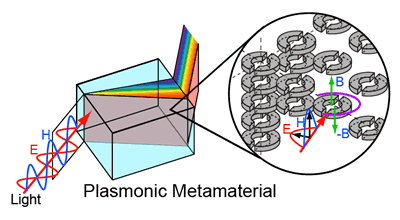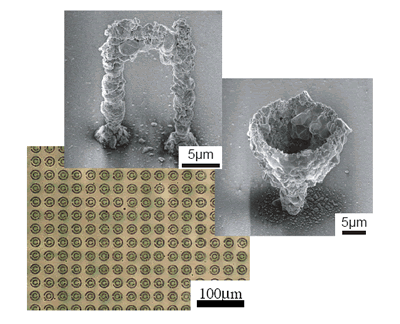|
 
 |
|
| @Curriculum Vitae |
y Position z |
| Associate Chief Scientist, RIKEN (The Institute of Physical and Chemical Research) Metamaterials Laboratory |
y Education z |
|
Ph.D in Applied Physics, Osaka University , Osaka , Japan in 1996. |
y Academic Experience z |
| 1993 Resarch Fellow, Japan Society for the Promotion of Science, 1996 Assistant Professor at Faculty of Engineering Science, Osaka University, 1997 Assistant Professor at Graduate School of Engineering Science, Osaka University, 2003 Research Scientist, RIKEN, 2003-2004 Associate Professor, Graduate School of Engineering, Osaka University, 2005-2007 Senior Research Scientist, RIKEN. 2008- Associate Chief Scientist, RIKEN |
| Research interests |
Nanophotonics, Applied Optics, Optical measurements |
|
| @Introduction of the project |
@@Since there are inestimable materials in nature, we sometimes presume that the variety of electromagnetic properties of materials are also unlimited. However, when we focus only on the visible light frequency region, we notice that the electromagnetic properties of the materials are tightly limited. In particular, in this frequency region, the magnetic permeability of the almost all materials always fixed to unity. This means that almost no materials respond to the magnetic component of the light. About the permittivity, different materials have different permittivity, but we can not control and change the value at will.
@
In this project, I will try to create new materials whose electromagnetic properties can be controlled artificially. Using nano-scale three-dimensional metallic structures and using the resonant interaction between free electrons and photons the macroscopic effective permittivity and permeability of the materials was controlled artificially. These artificial materials are termed "plasmonic metamaterials". By using plasmonic metamaterial technique we can create also the materials whose optical properties are never found in natural substances. This denotes that metamaterials extend the variety of the materials dramatically in the visible light region. In addition, this artificial material is expected to enable us to observe photonic phenomena that never be explained by the conventional optics.
@
According to this purpose, the main target of this project is set up to create plasmonic metamaterials that work in the visible light region. In order to produce plasmonic metamaterials, it is necessary to fabricate three-dimensional nano-sized metallic structures. However, this is still huge barrier even for current nano-fabrication techniques such as photolithography technique, electron beam lithography techniques and so on. So, in the first half of the project, we will develop the novel 3D nano-metal fabrication technique utilizing the nonlinear optical process such as two-photon induced metal-ion reduction (Figure 2). This material will be extended and applied to the unprecedented photonic functional devices.
|
 Figure 1@Plasmonic metamaterials
Figure 1@Plasmonic metamaterials |
 Figure 2@3D metallic structures fabricated by two-photon induced reduction method.
Figure 2@3D metallic structures fabricated by two-photon induced reduction method. |
|
| £UP |
|
|
|

